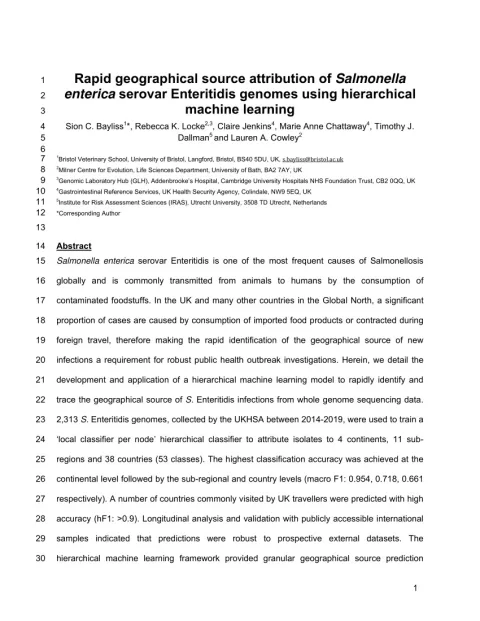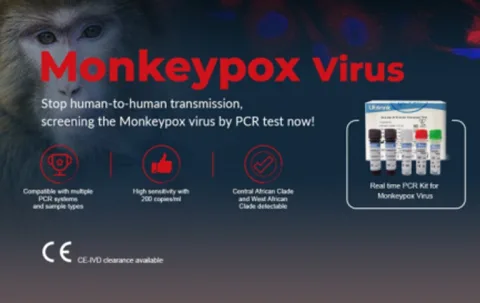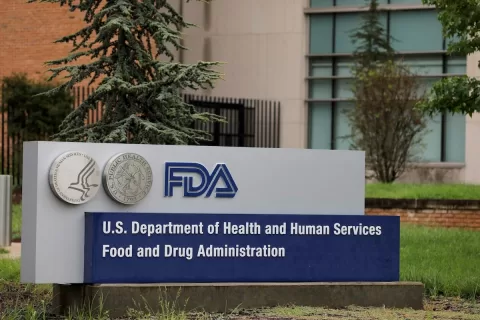The H5N1 virus in cats has emerged as a concerning health issue, particularly following cases of domestic felines contracting the highly pathogenic avian influenza A(H5N1). In a recent incident in California, three cats ingested raw milk contaminated with H5N1, leading to severe illness and the tragic loss of two of the pets. Symptoms such as fever and neurological changes became evident shortly after consumption, highlighting the potential risks of avian influenza in household pets. Additionally, this outbreak emphasizes the dangers of feeding raw dairy products to cats, as they can act as vectors for H5N1 infection. Pet owners must be aware of the risks associated with avian influenza in cats to protect their beloved animals and themselves from serious health consequences.
The highly pathogenic avian influenza strain, often referred to as H5N1, poses significant threats not only to birds but also to domestic pets like cats. This particular influenza variant has been linked to severe illness and fatalities in felines after exposure to contaminated substances, such as raw milk. Symptoms of H5N1 infection in these animals can include fever, lethargy, and neurological disturbances, which are critical for pet owners to recognize. Furthermore, the presence of this virus in cat urine presents a unique challenge in veterinary medicine, as innovative detection methods are required for accurate diagnosis. Addressing the implications of H5N1 in domestic animals is crucial for ensuring the safety of pets and their human companions alike.
Understanding the H5N1 Virus in Cats
The H5N1 virus, a strain of highly pathogenic avian influenza, has been primarily linked to birds but poses significant risks to cats. In the recent California case, domestic cats ingested raw milk contaminated with this virus, leading to severe health complications. Symptoms varied among affected cats, highlighting how H5N1 virus in cats manifests in different ways, from fever to neurological issues. Veterinary attention is crucial for early detection and treatment, especially since this virus has a high fatality rate in feline populations.
H5N1 infection symptoms in cats can include lethargy, anorexia, and in some cases, severe neurological signs like ataxia. The outbreak emphasizes the need for pet owners to be cautious about the sources of their cats’ food, especially raw dairy products linked to health risks. Contaminated food items can serve as a vector for the H5N1 virus, which not only affects cats but raises alarms for human health as well.
Health Risks of Raw Milk for Cats and Humans
While many believe that raw milk offers health benefits, recent studies indicate significant health risks associated with its consumption. The outbreak of the H5N1 virus in domestic cats in California serves as a stark example, indicating that raw products may harbor more than nutritional advantages; they can also be a source of severe viral infections. Pet owners should be aware that feeding raw milk to cats can result in exposure to pathogens that can lead to serious health issues, including the risk of contracting H5N1.
Furthermore, the consumption of raw milk poses health risks not only for felids but also for humans. The transmission of H5N1 infection through contaminated products suggests a responsibility for safe food handling and sourcing. By understanding the potential dangers of raw milk, pet owners and consumers can take informed actions to protect their health and that of their pets, emphasizing the importance of thorough pasteurization processes.
The Mechanism of H5N1 Virus Detection in Cat Urine
Recent findings highlight the efficacy of using cat urine as a sample for the detection of H5N1 virus. In the case discussed, the surviving cat’s urine tested positive for HPAI H5N1, providing critical information on the infection within felids. This showcases the high sensitivity and specificity of urine tests in diagnosing viral infections, particularly in cases where other methods, like nasal swabs, have yielded negative results.
Detection mechanisms have evolved, allowing veterinarians to identify H5N1 infection symptoms in domestic cats promptly. The use of reverse transcription PCR (RT-PCR) from urine samples has become a reliable method for diagnosing H5N1 in cats, offering a non-invasive diagnostic tool that encourages more timely interventions. This advancement in detection is vital for preventing further outbreaks and safeguarding both animal and human health.
Epidemiology of H5N1 in Domestic Cats
The epidemiology of H5N1 in domestic cats reflects a concerning trend of cross-species infection, particularly through direct or indirect contact with contaminated sources. The recent incident in California, where domestic cats became infected after consuming HPAI H5N1-contaminated milk, emphasizes the risks inherent in mixing agricultural and pet environments. Ongoing monitoring and studies are essential to understanding the transmission dynamics of this virus among domestic animals.
Understanding how H5N1 spreads in domestic animal populations, including cats, can inform public health strategies. Risks associated with H5N1 in domestic animals underline the critical nature of surveillance and risk management in veterinary public health. Preventive measures, along with educational efforts aimed at pet owners, can help mitigate the threat of H5N1 and protect both the feline population and the humans who interact with them.
Clinical Signs and Outcomes of H5N1 Infections in Cats
Clinical signs of H5N1 infection in cats can range from mild to severe, often leading to fatal outcomes. In the reported cases, affected cats exhibited lethargy, fever, and severe neurological symptoms indicative of HPAI infection. Understanding these symptoms is vital for veterinarians to initiate timely treatment and improve prognosis for afflicted felids. The variation in clinical outcomes among infected cats also presents a challenge in managing H5N1 outbreaks.
Outcomes for cats infected with H5N1 can depend greatly on the speed of diagnosis and the interventions applied. While some cats tragically succumb to the infection, others, like the surviving cat in the California incident, may recover with appropriate care. This emphasizes the importance of awareness and prompt veterinary response to ensure the health and safety of both felids and their owners.
Contaminated Raw Milk and Its Effects on Pets
Contaminated raw milk poses severe health risks for pets, as demonstrated in the California outbreak where domestic cats were diagnosed with H5N1 after consumption. Such incidents underline the potential dangers tied to feeding pets raw dairy products, which can be vehicles for various pathogens. While many owners may perceive raw milk as a healthful addition to their cats’ diet, the reality is that it can introduce harmful viruses, necessitating better awareness among pet owners.
The ingestion of contaminated raw milk can lead to serious health complications, showcasing the interconnectedness of food safety and animal health. The cases analyzed demonstrate how quickly an H5N1 virus infection can escalate when a pet ingests tainted food. Identifying and eliminating sources of such contamination are crucial steps in protecting the health of household pets and the broader community.
Public Health Implications of H5N1 in Domestic Cats
The public health implications of H5N1 infections in domestic cats should not be underestimated. As the H5N1 virus can infect multiple species, including humans, outbreaks like the one in California call for heightened awareness and proactive measures to prevent zoonotic transmission. The intersection between animal health and public health draws attention to the need for robust surveillance programs and educational initiatives designed to inform pet owners about the risks associated with feeding raw dairy products to their animals.
Moreover, the threat of H5N1 in domestic cats underscores the necessity for veterinarians to include this virus in their differential diagnoses, especially in cases involving cats that have been exposed to potentially contaminated products. Leveraging lessons from unfortunate incidents can enhance the overall response frameworks for managing zoonotic diseases, improving health outcomes for both animals and humans.
Preventative Strategies Against H5N1 Transmission in Cats
Implementing effective preventative strategies is crucial to reducing the likelihood of H5N1 transmission in domestic cats. Owners are encouraged to avoid feeding raw milk and other unpasteurized dairy products to their cats. Ensuring a safe diet can significantly minimize the risk of viral infection and safeguard the health of both pets and their handlers. The focus should remain on promoting transparent sourcing and processing of food products to mitigate incidence rates.
Additionally, regular veterinary check-ups can aid early diagnosis and management of potential infections. Incorporating educational programs on the dangers of H5N1 and safe food practices can empower pet owners to make informed decisions, ultimately preserving public health and animal safety. By fostering community awareness, it becomes possible to create a safer environment for both domestic cats and their human companions.
The Role of Veterinarians in Managing H5N1 Risks
Veterinarians play a vital role in managing the risks associated with H5N1 infections in cats. Through vigilant monitoring and reporting of clinical cases, they can help track the spread of this virus, providing critical data for public health responses. Additionally, their expertise in animal health equips veterinarians to educate pet owners about the risks of zoonotic diseases and the importance of safe feeding practices, including the dangers posed by raw milk.
Moreover, effective communication between veterinarians and public health officials is essential for a coordinated response to outbreaks. By sharing insights and establishing protocols for diagnosing and treating H5N1 infections, the veterinary community can significantly contribute to reducing transmission risks. As frontline responders to animal health crises, veterinarians are integral to safeguarding the well-being of pets and the health of the communities they live in.
Frequently Asked Questions
What are the symptoms of H5N1 virus in cats?
Cats infected with the H5N1 virus may exhibit a range of symptoms, including fever, lethargy, anorexia, and neurological issues such as hind limb ataxia. Early detection of H5N1 infection symptoms is crucial for effective treatment.
Can cats get H5N1 virus from raw milk?
Yes, cats can contract the H5N1 virus by ingesting contaminated raw milk. In a recent incident in California, domestic cats developed severe symptoms after consuming raw milk contaminated with the avian influenza virus.
How is H5N1 virus detected in cats?
H5N1 virus detection in cats can be performed through various methods, including testing urine samples. Interestingly, urine has proven effective for detecting H5N1 in live infected cats.
What are the health risks of avian influenza in cats?
Avian influenza, particularly the H5N1 strain, poses significant health risks to cats, including high mortality rates and severe neurological symptoms. It can spread through contaminated food sources like raw milk.
How does H5N1 in domestic animals affect public health?
The presence of H5N1 in domestic animals, such as cats, raises public health concerns due to the potential for zoonotic transmission. This highlights the importance of careful food sourcing, especially regarding raw dairy products.
What precautions should cat owners take regarding raw milk?
Cat owners should avoid feeding raw milk to their pets to prevent potential exposure to the H5N1 virus and other health risks. Instead, opt for pasteurized dairy products to ensure safety.
What happened to the cats exposed to H5N1 virus from raw milk?
In a recent case, three domestic cats consumed raw milk contaminated with H5N1. Two of the cats died, while one exhibited severe symptoms but later recovered after veterinary care. This underscores the risks of raw milk consumption for cats.
Are there any treatments available for cats infected with H5N1 virus?
Currently, treatment for cats infected with the H5N1 virus is primarily supportive, including veterinary care for symptom management. Rapid intervention is essential for improving outcomes in affected cats.
What is the significance of detecting H5N1 in cat urine?
The detection of H5N1 in cat urine is significant as it provides a reliable method for diagnosing avian influenza infections in live cats, allowing for timely treatment and control measures.
What impact does H5N1 have on farm cats during outbreaks?
During H5N1 outbreaks, farm cats may face severe health challenges, including high mortality rates. Reports have shown that many farm cats went missing or died due to exposure to the virus from contaminated sources.
| Key Point | Details |
|---|---|
| H5N1 Infection in Cats | The H5N1 virus infected domestic cats after ingesting contaminated raw milk. |
| Case Details | Three cats ingested raw milk from a contaminated lot. Two cats died, and one survived with severe neurological symptoms. |
| Clinical Symptoms | Affected cats showed symptoms like fever, anorexia, and neurological issues. |
| Testing Results | Urine from the surviving cat tested positive for the H5N1 virus. |
| Public Health Risk | This case highlights the health risks of raw dairy products for both pets and humans. |
Summary
The H5N1 virus in cats poses a significant health concern as demonstrated by the recent cases in California, where cats contracted the virus from contaminated raw milk. This incident emphasizes the importance of monitoring and preventing exposure to contaminated food sources, underscoring the need for awareness of H5N1 and its implications for both domestic animals and human health. Veterinarians and pet owners should remain vigilant regarding the risks associated with raw dairy products to protect the health of their animals.
The content provided on this blog (e.g., symptom descriptions, health tips, or general advice) is for informational purposes only and is not a substitute for professional medical advice, diagnosis, or treatment. Always seek the guidance of your physician or other qualified healthcare provider with any questions you may have regarding a medical condition. Never disregard professional medical advice or delay seeking it because of something you have read on this website. If you believe you may have a medical emergency, call your doctor or emergency services immediately. Reliance on any information provided by this blog is solely at your own risk.








